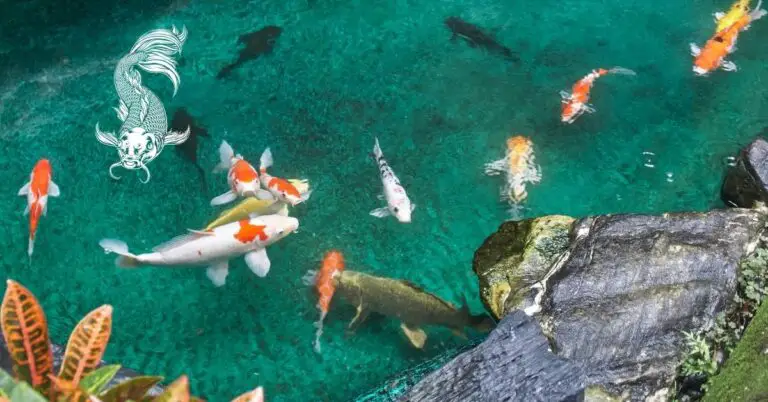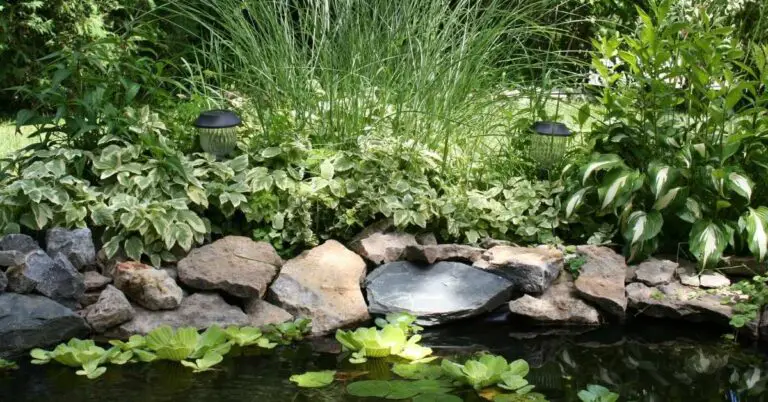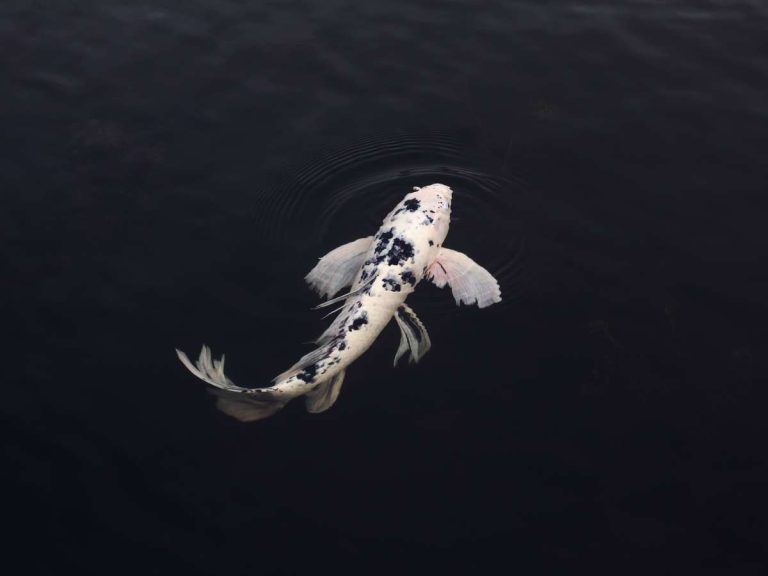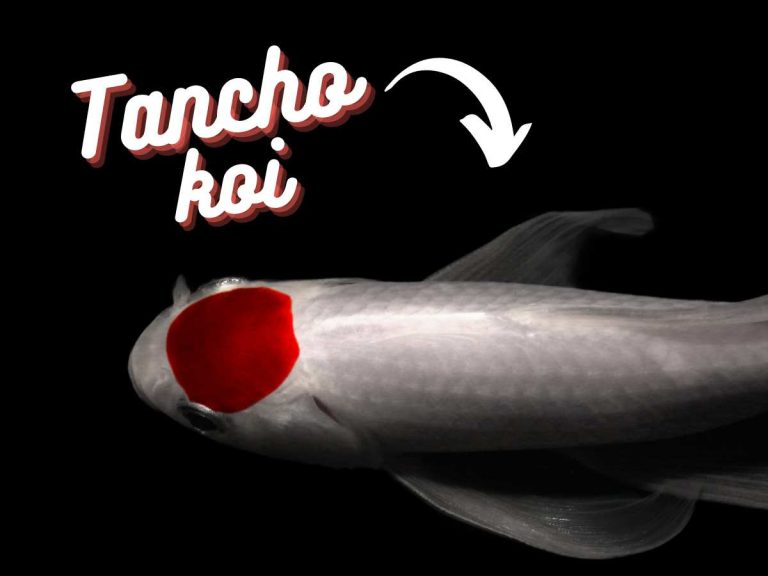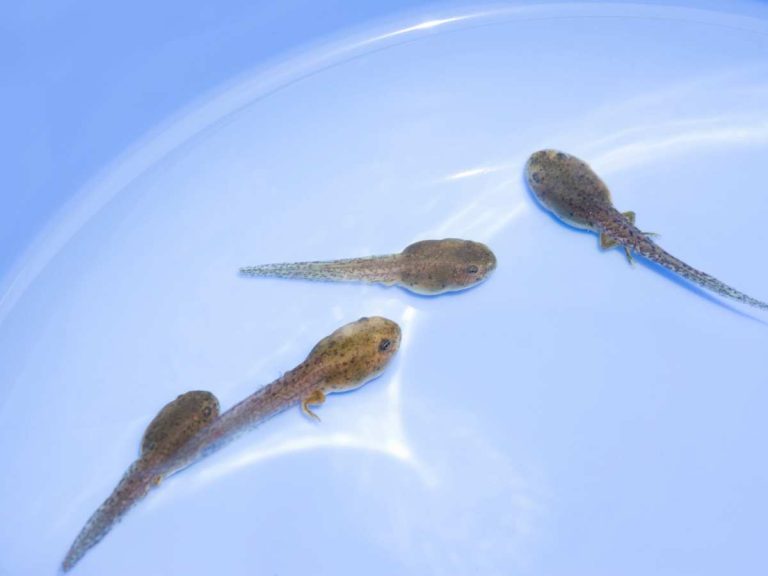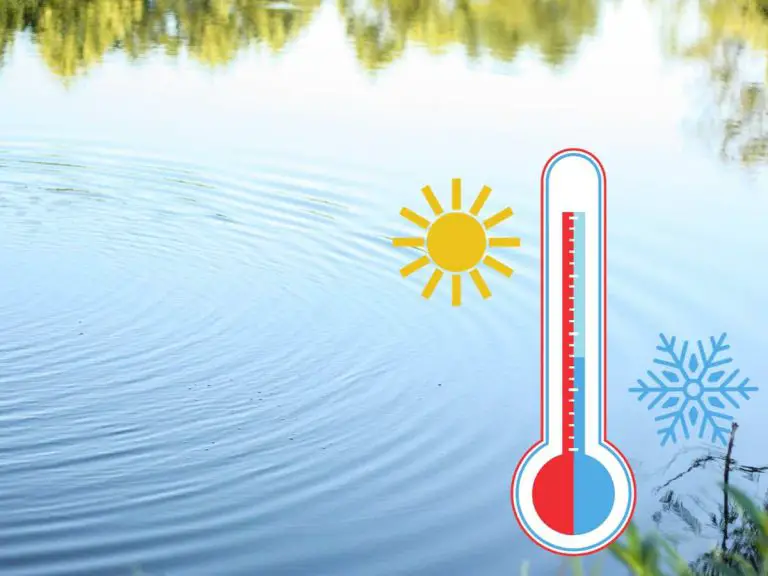How to Heat Your Koi Pond In Winter: Expert Tips for a Happy and Healthy Habitat
If you’re wondering how to heat your koi pond, look no further! This article will provide you with all the information you need to maintain the optimal temperature for your fish, no matter the season.
To keep your koi fish comfortable during colder months, you need to learn how to properly heat your pond. In this article, we’ll share helpful tips on different heating options, maintaining pond temperature, winter koi pond care, and other factors to consider.
Stay tuned to discover everything you need to know to make your koi pond a relaxing and comfortable habitat for your beloved fish!
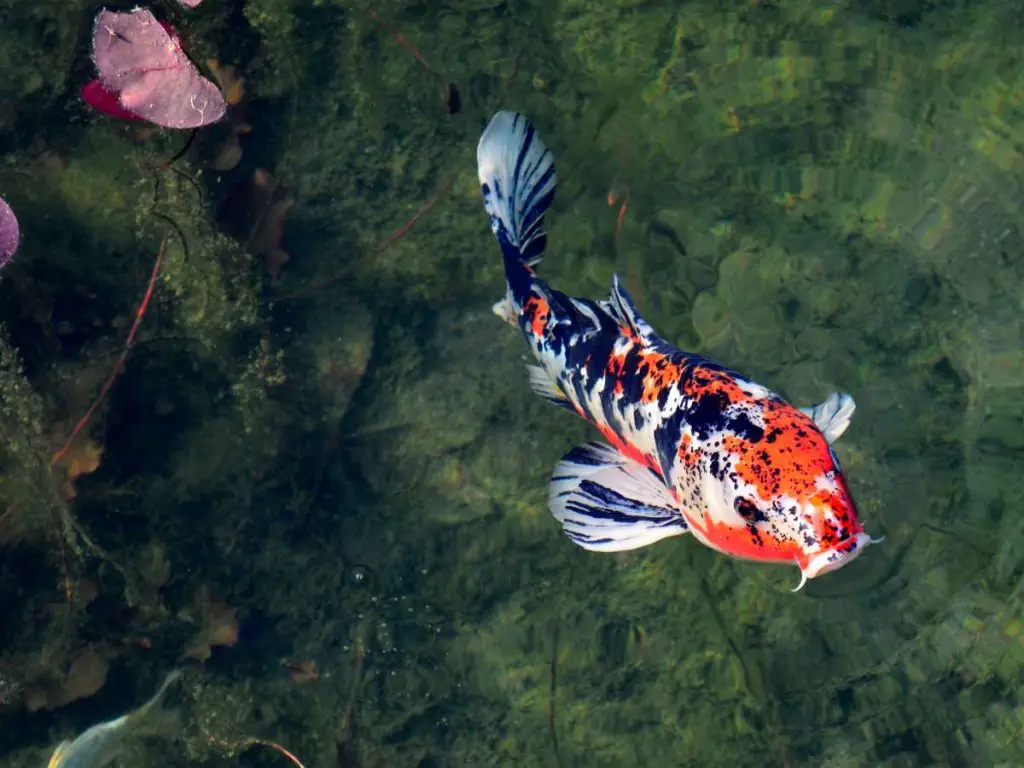
Different Koi Pond Heating Methods – Quick Guide
Before we get into more detail below, here are some of the basic ways to heat a Koi pond in winter with the pros and cons of each:
| Heating Method | Cost | Benefits | Drawbacks |
|---|---|---|---|
| Submersible Heater | Low to Medium | Direct heating; Easy to install; Good for smaller ponds | May not be efficient for larger ponds; Requires regular monitoring to prevent overheating. |
| External Heater | Medium to High | Efficient for larger ponds; Even heating distribution | More expensive; Installation can be more complex |
| Solar Heater | Low initial cost, potential ongoing costs for larger systems | Eco-friendly; Uses renewable energy; Lower operational costs | Inconsistent heating in colder climates; May not be sufficient for larger ponds on its own. |
Understanding Optimal Temperatures For Koi Fish
We all know and appreciate the beauty of Koi fish. There are different types of koi fish as well, including Kohaku, Sanke, and Showa, to name a few. Each type has different color patterns and markings that make them stand out.
However, no matter what kind of Koi you have, it’s essential to maintain the optimal temperature range for them to thrive. Ideal water temperatures for koi fish range from 60 to 74 degrees Fahrenheit. Anything lower than that can put your fish in danger.
Cold weather affects koi fish in several ways. It slows their metabolism, which reduces their immune system’s effectiveness and makes them more susceptible to diseases. Furthermore, koi fish become less active in colder water, which can lead to lethargy and even death.
How Cold Weather Affects Koi Fish
During winter, koi fish often live in more inhospitable environments as the water temperatures change. As a consequence, their metabolic rates fall, which can cause adverse health conditions. The reduced metabolic rate makes it hard for koi fish to digest food properly, which can lead to malnutrition.
That is why it is essential always to maintain the ideal water temperature range for koi fish and closely monitor them for any changes in behavior or appetite.
- Immune System Blues: As their metabolism slows down, their immune system does too. It’s like how we’re more prone to catching a cold when we’re stressed or tired. For koi, the cold water acts as that stressor, making them susceptible to those nasty pond diseases.
- The Slow-mo Phase: Koi are usually the life of the pond party, right? But in colder waters, they mellow out big time. It’s not just a mood; it’s their way of conserving energy. Less movement means less energy spent.
- Feeding Fiascos: Here’s where things get a bit tricky. With their metabolism in low gear, koi struggle to digest food. It’s like them having a huge feast and then not being able to process it. This can lead to malnutrition, and worse, if they eat too much, the undigested food can cause bacterial growth in their gut. Yikes!
But wait, there’s more. When the water gets too cold, the oxygen levels decrease. Koi need a good oxygen supply, especially in winter. So, the colder it gets, the more you need to ensure proper aeration in your pond.
So, if you’re living in an area where the mercury dips quite a bit, it might be a good idea to look into pond heaters or at least some kind of insulation. And always, always keep an eye on that water temperature.
How To Heat Your Koi Pond In Winter
As winter looms, ensuring your koi pond stays at the right temperature can mean the difference between happy, vibrant fish and… well, let’s not go there. Thankfully, there are heating solutions available to cater to every type of pond and budget. But what are they, and which one’s best for you?
Different Types of Koi Pond Heaters Explained
- Submersible Heaters: Think of these as the immersion rods of the pond world. They go right into the water, heating it directly. They’re usually pretty straightforward to install. Just ensure they’re fully submerged, and you’re good to go. If your pond isn’t too large, these can be a great option. However, for bigger ponds, you might need multiple units, and that can get a bit tricky.
- External Heaters: These are the heavy-duty heating systems for ponds. They work a bit like your home’s central heating. Water is pumped out of the pond, warmed up via a heat exchanger, and then pumped back in. It’s a continuous cycle, ensuring a consistent temperature. If you’ve got a larger pond or if your area experiences particularly harsh winters, this might be the way to go.
- Solar Heaters: Eco-friendly and harnessing the power of the sun – what’s not to love? Solar heaters use solar panels to absorb sunlight and convert it into heat. This heat is then used to warm the pond water. They’re especially nifty if you’re in a sunnier locale. Plus, you’re doing a bit for the planet by reducing your carbon footprint.
Cost and Efficiency Comparison of Heating Options
- Submersible Heaters: On the face of it, they’re the most wallet-friendly option. However, if you’ve got a sizable pond, you might need multiple units, which can push up the cost. They’re best suited for smaller ponds where they can efficiently maintain the temperature.
- External Heaters: While they might make you wince at the initial price tag, they’re built for performance. They can handle larger volumes of water and maintain consistent temperatures across bigger ponds. Over time, considering their efficiency and the potential reduced need for repairs or replacements, they might just justify that initial investment.
- Solar Heaters: The cost of setting up can vary. If you’re in a region with plenty of sunshine, it’s a fantastic one-time investment. Over time, the savings on your electricity bill can add up, making it a cost-effective choice. However, if your area has long stretches of cloudy days, especially in winter, it might not be the most reliable option.
When selecting a heater, think long-term. It’s not just about the initial cost, but also efficiency, potential savings in the future, and of course, the comfort and health of your koi.
Maintaining Koi Pond Temperature
Having a koi pond isn’t just about digging a hole, filling it with water, and adding the fish. It’s like nurturing an aquatic ecosystem, with your koi as the stars of the show.
And just like any superstar, they have specific needs, especially when it comes to water temperature.
Here’s how to ensure your koi are always swimming in comfort:
Tips for Monitoring Water Temperature
- The Right Thermometer: Start with the basics. A high-quality thermometer is your first line of defense against temperature fluctuations. Whether you go digital or traditional, ensure it provides accurate readings. Position it in a place where you can easily read it without disturbing the pond environment.
- Frequency is Key: While it might seem excessive, checking the water temperature daily is a good habit. Temperature fluctuations can happen more quickly than you’d expect, especially in changing seasons.
- Know Your Koi: It’s not just about knowing they’re pretty. Different koi breeds can have different temperature preferences. For instance, while one breed might thrive in slightly cooler temperatures, another might need it a bit warmer. A quick research dive can ensure you’re keeping your fishy friends in their comfort zone.
Balancing Water Chemistry
- The pH Balance: Think back to your high school chemistry. The pH level of your pond indicates how acidic or alkaline it is. Koi prefer a slightly alkaline environment, with a pH level between 7.0 and 8.6. But remember, sudden changes, even within this range, can stress your fish.
- Alkalinity Matters: Alkalinity acts as a pH buffer, preventing sudden spikes or drops. Maintaining a stable alkalinity level can help keep your pH levels steady too.
- Regular Testing: Invest in a good water testing kit. Checking your pond’s water chemistry might seem like a chore, but it’s crucial. Regular tests can help you catch potential problems before they become serious.
- Natural Balancers: Consider using natural methods to balance water chemistry. Plants, for instance, can absorb excess nutrients and prevent algae blooms. They also release oxygen during the day, which benefits your koi.
Maintaining the right pond temperature and water chemistry might seem like a daunting task, but with the right tools and a bit of diligence, it becomes second nature. After all, your koi depend on you to create a stable, healthy environment.
Insulation methods to retain heat
| Insulation Materials | Advantages | Disadvantages |
|---|---|---|
| Blankets or covers made of insulating materials | Relatively inexpensive and easy to install | Can block sunlight if left on for too long, which can affect water chemistry and the growth of plants in the pond |
| Foam board or spray insulation | Provides superior insulation and restricts heat loss significantly | Can be more expensive than other insulation materials, and requires more effort to install properly |
As the weather starts to get colder, heat loss becomes a significant concern for koi pond owners. Adding insulation to your pond can help retain heat and reduce energy costs. Some insulation options include blankets or covers made of insulating materials, foam board, or spray insulation. Each option has its advantages and disadvantages, so choose one that best fits your needs and budget.
Winter Koi Pond Care: Preparing For Winter
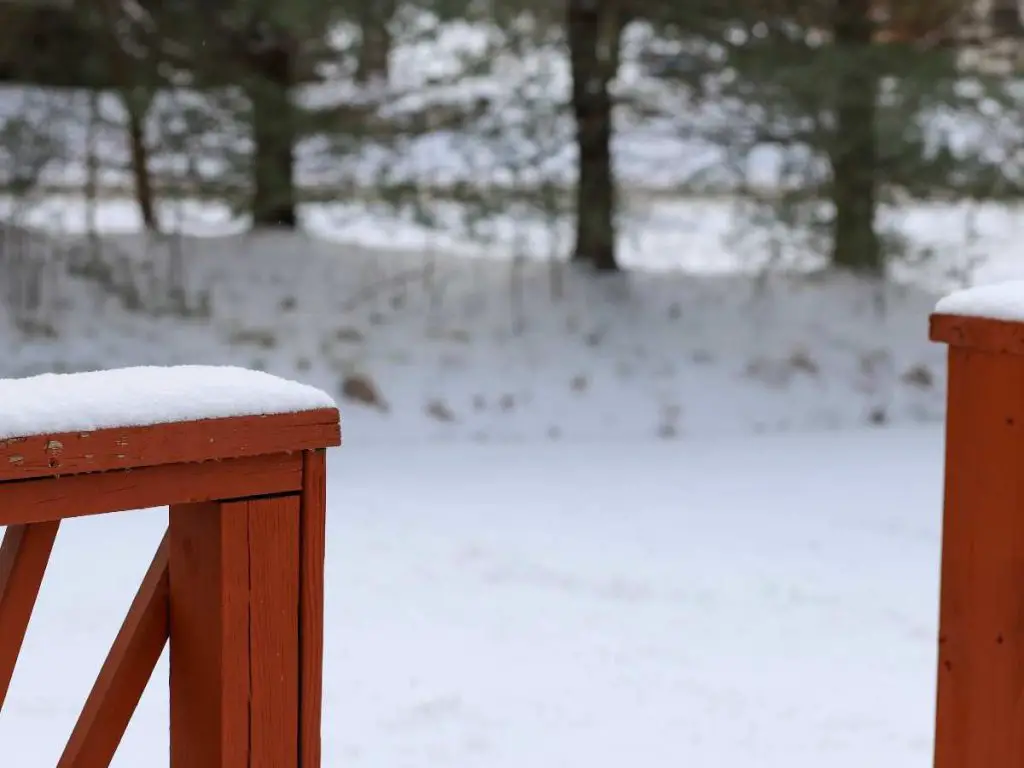
It’s important to prepare your koi pond for winter before colder weather hits. That means cleaning the pond and removing any debris, such as fallen leaves. You may also want to consider covering the pond with a net to prevent further debris from entering.
Feeding and Nutrition for Koi Fish During Winter
During colder seasons, your koi fish may have a decreased appetite. It’s important to choose the right koi food that is specifically formulated for cold weather. Look for a food that contains a higher percentage of fat and protein to help your koi generate energy and maintain body heat.
Precautions During Extreme Weather Conditions
If you live in an area with extreme weather conditions, it’s important to take extra precautions to ensure your koi fish remain comfortable and healthy. This may mean temporarily relocating them to an indoor tank if the water temperature drops too low. You may also want to consider investing in a backup generator in case of power outages.
Winter koi pond care is all about preparing your pond for colder weather, choosing the right koi food, and taking extra precautions during extreme weather conditions. By following these tips, you can ensure that your koi fish remain comfortable and healthy throughout the winter months.
Other factors to consider
When it comes to heating your koi pond, there are a few other factors you should keep in mind. One major consideration is the size of your pond. A larger pond may require a more powerful heater, while a smaller pond may only need a small heating unit to maintain a comfortable temperature.
Another important factor is the climate and location of your pond. If you live in an area with colder winters, you may need to invest in a more robust heating system to keep your koi fish comfortable. On the other hand, if you live in a milder climate, a simple heating unit may be sufficient.
Of course, budget and cost-effectiveness are also important factors to consider. While some heating systems may be more expensive than others, they may also be more energy-efficient and long-lasting, ultimately saving you money in the long run. Take the time to research different options and weigh the pros and cons before making a decision.
Heating Options for Koi Ponds
| Heating Option | Cost | Efficiency |
|---|---|---|
| Gas Heaters | $$ – $$$ | High |
| Electric Heaters | $$ – $$$ | High |
| Heat Pumps | $$$ – $$$$ | Very High |
In addition to these factors, keep in mind that other elements in and around your pond can also impact the temperature. For example, if your pond receives a lot of direct sunlight, it may become warmer, while shaded areas may stay cooler. Landscaping elements like trees and shrubs can also help insulate the pond and retain heat.
By taking these factors into consideration, you can choose a heating system that is best suited for your koi pond. Remember, a comfortable water temperature is key to keeping your fish healthy and happy all year long.
Different types of pond thermometers
When caring for your koi, maintaining the right water temperature is crucial. That’s why every koi pond owner should invest in a high-quality pond thermometer.
There are different types of pond thermometers available in the market, including digital thermometers, floating thermometers, and submersible thermometers.
Digital thermometers give the most accurate readings, while floating thermometers are suitable for quickly checking the temperature on the surface of the water.
Submersible thermometers are the easiest to use and read at a glance because you don’t need to remove them from the water.
How to choose the right pond thermometer
When choosing a pond thermometer, consider the size of your pond, the depth of the water, and the location of the thermometer placement. You need to ensure you can easily read the thermometer from the viewing position you have.
Additionally, it’s essential to choose a thermometer that is durable and can withstand the harsh outdoor conditions, including UV rays and extreme temperatures. Check customer reviews and ratings on different types of thermometers to make an informed decision.
Importance of monitoring water temperature
Monitoring the water temperature of your koi pond using a reliable thermometer is essential for maintaining healthy and happy fish. Too high or too low temperatures can harm koi, causing stress, diseases, or even death.
Keeping track of the water temperature also helps you adjust the heating system as necessary to maintain constant water temperature, especially in colder seasons.
Additionally, monitoring the temperature can help identify early signs of potentially harmful environmental factors, allowing you to take proactive measures before it’s too late.
Final Thoughts: Tips for Heating Your Koi Pond
Wow, we covered a lot of ground in this article! By now, you should have a good understanding of how to keep your koi fish comfortable during colder seasons and how to properly heat their pond. Let’s do a quick recap of the main points covered:
- We discussed the different types of koi fish and their optimal water temperature
- We learned about different heating options for outdoor ponds, including cost and maintenance considerations
- We talked about maintaining the koi pond temperature by monitoring water temperature, balancing water chemistry, and insulation methods
- We provided tips for winter koi pond care, such as preparing the pond for winter and feeding the fish appropriately
- We discussed other factors to consider, such as pond size, climate and location, and budget
- Finally, we covered pond thermometers and the importance of monitoring water temperature
Now that you’ve got the basics, it’s up to you to put them into practice! Remember, keeping your koi fish happy and healthy through every season is the key to a successful koi pond. So go ahead and implement these tips, and watch in amazement as your pond thrives with happy fish!
Related Questions
What is the best temperature for koi fish?
The optimal water temperature for koi fish is between 65-75°F (18-24°C). This range promotes their metabolism and overall health. It’s essential to maintain a consistent water temperature to keep your fish comfortable and thriving.
Can I use a regular pond heater for my koi pond?
Yes, you can use a regular pond heater as long as it is appropriate for the size of your koi pond. However, it’s essential to choose a heater designed specifically for outdoor ponds with the appropriate wattage and size. Pond heaters designed for indoor aquariums may not provide sufficient heat for outdoor koi ponds.

